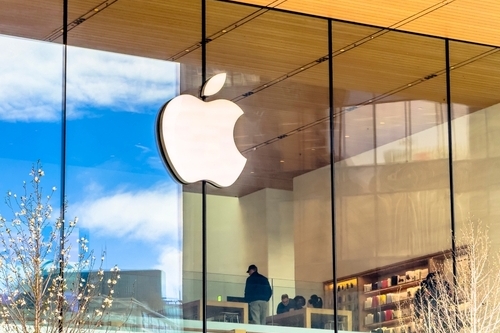BayFirst Q2 Net Loss Widens 425%

Key Points
Net loss (GAAP) widened to $1.2 million, or $(0.39) per share, with dividend payments suspended during the quarter.
Net interest income (GAAP) climbed 33.7% in the second quarter of 2025 compared to the same period in 2024, and net interest margin (GAAP) improved by 0.63 percentage points.
Credit costs spiked, with net charge-offs and provisions for credit losses both rising sharply from the prior year.
BayFirst Financial (NASDAQ:BAFN), a Tampa Bay-based community bank specializing in government-guaranteed lending and regional financial services, released its second quarter 2025 results on July 29, 2025. The company reported a net loss of $1.2 million, or $(0.39) per diluted share (GAAP), a decline from net income of $0.9 million, or $0.12 per share, in the same period last year. No Wall Street analyst estimates were available for this period, so there was no formal comparison to published expectations. The quarter saw significant increases in both net interest income and net interest margin, driven by loan and deposit growth, but also featured higher credit costs, a suspension of dividend payments, and ongoing asset quality issues tied to government-guaranteed lending. Overall, the period reflected both operational progress and persistent risk concerns as BayFirst navigates a strategic transition.
| Metric | Q2 2025 | Q2 2024 | Y/Y Change |
|---|---|---|---|
| EPS (GAAP) | $(0.39) | $0.12 | -425.0 % |
| Net Interest Income | $12.3 million | $9.2 million | 33.7 % |
| Net Interest Margin | 4.06 % | 3.43 % | 0.63 pp |
| Noninterest Income | $10.8 million | $11.7 million | (7.7 %) |
| Noninterest Expense | $17.5 million | $16.6 million | 5.4% |
About BayFirst Financial’s Business and Strategic Priorities
BayFirst Financial is a community-oriented bank centered in the Tampa Bay region. The company’s two main business lines include government-guaranteed lending -- especially loans backed by the U.S. Small Business Administration (SBA 7(a) loans) -- and traditional community banking services to local consumers and small business clients. Its government-guaranteed lending business operates nationally, while its community banking arm serves the regional Florida market.
Recently, BayFirst has focused on balancing these two divisions. The company is managing risk and seeking growth while addressing loan losses and improving its funding mix. Key success factors for BayFirst are the ability to generate recurring interest revenue, manage credit quality in its loan book, grow core deposits, and maintain regulatory compliance. Technology investment supports the origination and management of a high volume of small SBA loans, which has scaled BayFirst’s presence nationally even as it works to strengthen local relationships and deposit gathering in its branch footprint.
Quarter in Review: Financial and Operational Developments
Net interest income (GAAP) increased notably, climbing 33.7% compared to the same period in 2024. Net interest margin, which measures the difference between what the bank earns on loans and what it pays on deposits as a percentage of assets, improved by 0.63 percentage points year over year. This positive trend reflects disciplined deposit pricing and a favorable mix of interest-earning assets, with loan interest income rising and deposit interest expenses decreasing. Loan growth remained a bright spot, with loans held for investment up 3.8% from the prior quarter and 11.7% year over year. Deposit balances, a key source of bank funding, increased 3.1% from the prior quarter and 11.6% year over year.
Despite this operational progress, losses in the government-guaranteed lending division -- particularly in unguaranteed SBA 7(a) loans -- outweighed these gains. Write-offs, or charge-offs, on bad loans climbed to $6.8 million, more than double the level a year earlier. Provisions set aside for credit losses surged to $7.3 million. Management attributed these expenses in part to updated operating procedures at the SBA, which delayed some loan production and sales, and to ongoing risks in the Bolt loan program -- BayFirst’s high-volume, small-dollar SBA 7(a) product. Management addressed these asset quality concerns by suspending all dividend and board fee payouts to conserve capital and strengthen the balance sheet.
Noninterest income declined 7.7% compared to the same period in 2024, to $10.8 million. This line item, which includes revenue from sources other than loan interest -- such as loan sales and servicing fees -- was pressured by lower fair value gains on government-guaranteed loans, as well as decreases in loan servicing income and government-guaranteed loan packaging fees. Government-guaranteed loan fair value gains did rise sequentially, but gain-on-sale income was variable. Noninterest expense from continuing operations was $17.5 million, compared to $16.6 million in the same period last year, primarily due to higher loan origination and collection expenses. As a result, the company delivered a net loss (GAAP) that was wider than both the previous quarter and the same period last year, and saw book value per share (GAAP) decline slightly to $22.30.
BayFirst’s core community banking operations continued to show growth. Community banking loans were up 3% during the period, as the company prioritized balance sheet growth in its regional franchise. Deposit gathering was robust, helped by expansion in noninterest-bearing accounts and savings/money market products. While growth in brokered deposits, which are funds placed by third-party intermediaries and typically come with higher costs, provided added funding, the level of these deposits increased to $186.7 million as of June 30, 2025 -- over three times the volume a year earlier. While management cites this as a measure supporting balance sheet liquidity, the higher funding costs warrant future attention.
Asset quality metrics, which assess the health of the loan portfolio, showed both improvement and continuing stress. Nonperforming assets -- the sum of loans in default or not collecting interest plus bank-owned real estate -- were 1.79% of total assets, better than the previous quarter but above last year’s figure. The allowance for credit losses, a reserve for anticipated loan losses, rose to 1.65% of total loans. These figures suggest both heightened risk, mostly tied to the government loan book, and a more cautious approach to managing that risk. Capital ratios declined slightly but stayed well above regulatory minimums. Liquidity, the ability to meet cash obligations, remained stable with a modest increase in borrowing from the Federal Home Loan Bank. Technology, while not a major focus of this report, continues to underpin BayFirst’s originations, especially as the company processes large numbers of SBA loans through its Bolt platform.
The period also included the initiation of a board-led strategic review, aimed at reducing exposure to higher risk, unguaranteed SBA 7(a) balances. Management stated that "Much progress is being made," on this front and expects to provide further updates in the coming weeks. The company’s suspension of dividends and fees was cited as a preventive step to strengthen capital during this review. No changes to the twelve-branch footprint were reported, and competitive pressures from regional banks and fintech lenders remained a backdrop, particularly in the Florida and nationwide SBA lending markets.
Looking Ahead: Guidance and Key Considerations
BayFirst did not issue formal financial guidance for the upcoming period or for fiscal 2025. Management provided a cautiously worded outlook, emphasizing an "uncertain" environment marked by persistent high interest rates and the importance of strong loan oversight and maintaining close relationships with our borrowers. The ongoing strategic review around the SBA 7(a) exposure and the company’s pivot towards recurring revenue through net interest income -- rather than dependency on volatile loan sale gains -- were highlighted as near-term priorities. The board and management referenced the intention to disclose additional details about the strategic review and efforts to reduce balance sheet risk in the coming weeks.
Investors and observers should watch for future updates on the company’s risk management progress, especially any additional clarity on the path to stabilized earnings and asset quality. Key indicators will include trends in net charge-offs, provision expenses, and the composition of deposit funding. Recurring performance in the core community banking and government-guaranteed lending segments will be important to track, as will any macroeconomic changes affecting credit costs. Notably, the board suspended all dividends for common and preferred shares during the period, breaking with several consecutive quarters of $0.08 per share payments. BayFirst does not currently pay a dividend.
Revenue and net income presented using U.S. generally accepted accounting principles (GAAP) unless otherwise noted.
Where to invest $1,000 right now
When our analyst team has a stock tip, it can pay to listen. After all, Stock Advisor’s total average return is 1,039%* — a market-crushing outperformance compared to 182% for the S&P 500.
They just revealed what they believe are the 10 best stocks for investors to buy right now, available when you join Stock Advisor.
*Stock Advisor returns as of July 29, 2025
JesterAI is a Foolish AI, based on a variety of Large Language Models (LLMs) and proprietary Motley Fool systems. All articles published by JesterAI are reviewed by our editorial team, and The Motley Fool takes ultimate responsibility for the content of this article. JesterAI cannot own stocks and so it has no positions in any stocks mentioned. The Motley Fool has no position in any of the stocks mentioned. The Motley Fool has a disclosure policy.




